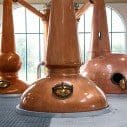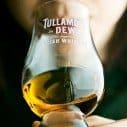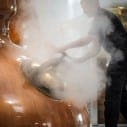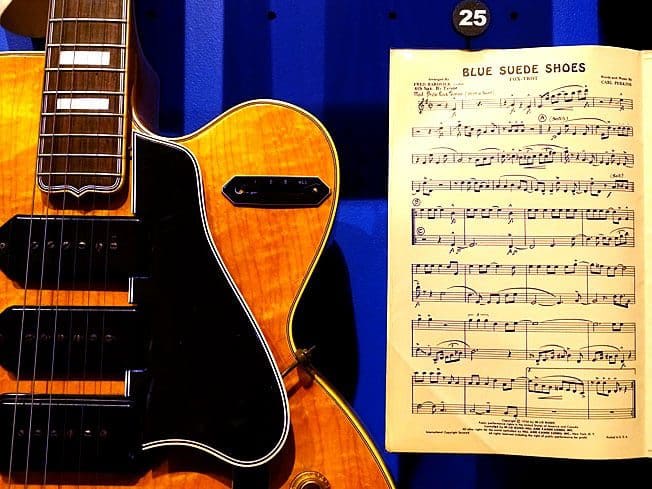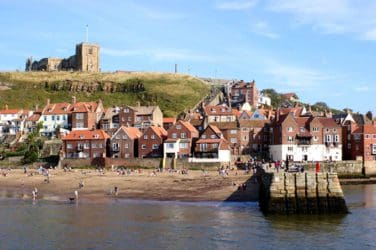The home of Tullamore DEW – words Chris Zacharia
As if to illustrate the lighter side of nationalism, we tend to associate each country with the talismanic product of its culture. America is Hollywood, fast food and millionaires.
Sweden contributes a utopia of cheaply-made ultra-fashionable furniture, although decorating living rooms must be easy when a sub-Arctic darkness keeps you indoors for half the year.
Brazil has given us the outrageously-skilled samba sportsman, clad in the famous yellow-and-green kit and providing creative flair to strike-forces from Derby to Donetsk. Although it’s the first thing that comes to mind, it would be unfair to say that Ireland has only a legacy of delicious booze to offer. Two thousand years of history from the Book of Kells to Roy Keane would put pay to that, without mentioning James Joyce. Nonetheless, before I left home my only experiences of Irish exports were The Pogues, Guinness and my late-teen Irish girlfriend, all three of which went well together.
But since coming of age, another export has re-emerged from the Emerald Isle. Whiskey is traditionally a Scot’s game, or perhaps the Japanese if you’re a hipster. But Irish whiskey has a long legacy of its own, and one that is enjoying a new golden age. Sales of Irish whiskey have risen by 220% since 2003. That’s a lot of hangovers and export-led growth, depending on who you talk to. More importantly, exports are predicted to double before 2020. Irish whiskey is now the world’s fastest-growing spirit. Why are people drinking more Irish whiskey? Has the world witnessed an exponential rise in hell-raising parties? Are wannabe Don Drapers stocking their drinks cabinets with greater zeal?
Part of it, as always, is economics. Middle-class expansion around the world has caused a spike in demand for ‘luxury’ goods. Newly-monied industrial scions and minted media burghers want to spend their cash on the finer things in life which for so long have been afforded only to the elites or the Westerners of the cinema screens. Irish whiskey has profited greatly from this trend. Sure, everyone’s got scotch in their cabinet, but who’s curious enough to have an Irish blend?
But it’s also to do with whiskey’s nature. Whiskey is a powerful drink. I’m not just referring to the high proof. It carries a whole medley of ritualistic moments, from the after-work liberation of the moody ad exec to the toast of knees-ups for ne’er-do-wells. It’s one of those drinks that crosses boundaries of established drinks stereotypes. Gin is wedded to the image of abstemious women on perpetual diets and gutter-dwelling Victorians. Rum will be forever the tipple of seafarers and wannabe pick-up artists clicking bejewelled fingers to Nelly Furtado. Vodka finds its spiritual home in the bleary-eyed stumble of the melancholy Russian and the dodgy newsagents on any British high-street, with their inevitable selection of questionable ethanol.
But whiskey’s got more. It’s a staple of countless cocktails (although be careful which whiskey you choose to bury under Asda Smart Price apple juice) and carries an air of mystique around its distillation process, reminiscent of the terroir-obsession of wine. It’s an acquired taste – I thought it tasted like sugary sweat when I was a kid – but you’re hooked it’s one that lasts for life, inspiring devotees to spend big sums on their favourite bottle. There’s an innate complexity to whiskey that makes it very rewarding; there are far more ways of creating different kinds of whiskey than there are gin, vodka, or rum.
People trust the Irish to know their drink, and accordingly Irish whiskey was very popular. But the Emerald Isle’s whiskey exports were hit hard over the past few decades by the temperance movement, Britain’s punitive ban of Irish trade with Commonwealth markets, and the legendary American Prohibition. All three made it almost impossible for Irish distilleries to sell their drink overseas. By the 1970s, only two major distilleries remained.
Tullamore DEW, one of the finest Irish whiskeys, offers an excellent example of the industry’s revitalisation. Although the triple-distilled, triple-blend whiskey has won admirers world-over, in 1954 the effects of the economic feud with Britain forced the distillery – which had stood in the sleepy County Offaly town since 1829 – to close down. But this year, on the 50th anniversary of the original distillery’s closure, Tullamore DEW has opened a state-of-the-art €37m distillery in the old town to meet increasing demand for their liquor.
And you can see why demand is so high: it’s a real premium product. Tullamore DEW is a triple-distilled blended whiskey, with three key ingredients: grain, pot still and malt whiskey. It’s noticeably different from Scotch – lighter, breezier, with a creamier finish than Johnny Walker or Chivas Regal. The ‘original’ Tullamore DEW blend, crafted in 1947, is matured for eight years. It’s mellow and smooth, with a moreish fruitiness. Others in the family, like the Phoenix – with a fearsome 55% proof – are oilier, with a sharper spiciness. I’m no whiskey connoisseur, but it’s easy to appreciate the distinctiveness of flavour. You can understand why it’s so popular.
The opening of the new distillery feels symbolic. The changing fortunes of Irish whiskey, from second most popular spirit in the world to the aficionados obscurity, seems to speak of the challenges faced by the country as a whole. Economic embargoes imposed by the British decimated the export market, just as British interference has always troubled and hindered the island. The regeneration of one of Ireland’s most iconic and distinctive whiskeys, with the new €37m distillery in its heartland, is welcomed. It’s a sign that Irish craftsmanship still carries weight around the world.
But new distillery or not, the place tourists most associate with Ireland is of course Dublin. It’s an intimate city, possessing the to-be-expected stateliness of a capital city but without the usual consequences. There are magnificent buildings, desirable restaurants, a profound sense of history, but without the hustle and bustle or the self-important posturing that you find in other capitals. Our walking tour of the city is easy. We have the picturesque square outside Leinster House, the seat of the Irish parliament, to ourselves.
It’s the food that impresses most. Ireland doesn’t have a strong reputation for food, possibly because it’s continually associated with potatoes and the infamous famine. Hearty northern European fare, like stews and pies and roasts, is traditional. But for such a small city – around half a million inhabitants – Dublin has a surprising variety of cuisines. Fade St Social is at the forefront of this new dawn of dining. Modern, sophisticated and charming, it feels uniquely Irish. The food is very high-end, with braised rabbit and charred veal on the menu, but the atmosphere is so much more. There’s a liveliness that justifies the inclusion of ‘Social’ in its title, extending to the staff, who are some of the friendliest, most knowledgeable and unassuming of waiting staff you’ll encounter. It’s only a Monday night, but the place is packed.
Less surprising than the excellent food are the pubs, which are as formidably good as you’d expect. McDaid’s, a beautifully preserved ‘literary’ pub carved into the remnants of an old chapel, is one of those pubs that’s so homely and traditional you feel like a regular from the moment you take your first sip. If anything Kehoe’s, on nearby Anne St, is even more rustic, with enormous mahogany doors and stained-glass windows; the sense of history and place is palpable. By the time we get to Doheny & Nesbitt everything is pretty blurry, but I’m told I had a great time there.
My hangover ensures that I’ll continue to associate Ireland with drink, even though there’s so much more than that. But as the story of Irish whiskey shows, sometimes it’s worth sticking to what you know, through thick and thin.
The home of Tullamore DEW – words Chris Zacharia

